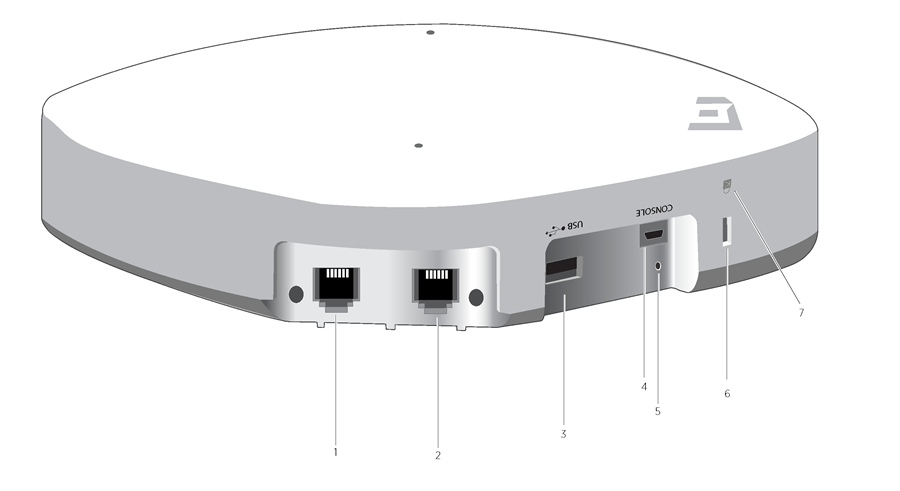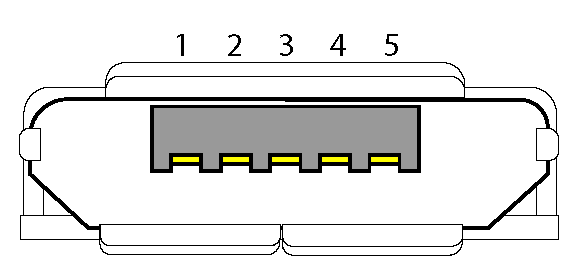AP410C Features
- Two LED status lights
For LED activity description, see Status LED Activity Description.
- One light sensor located at the top of the device
- Two Ethernet ports - Eth0 and
Eth1Ethernet ports (Eth0 and Eth1) automatically negotiate half- and full-duplex connections with the connecting device.
- Eth0 is 100/1000/2500 BASE-T
- Eth1 is 10/100/1000 BASE-T
- One USB port
Use the USB port to connect USB-based beacons such as iBeacon and Internet of Things (IoT) devices.
Remove the screw that secures the protective cover to access the USB port.
- One micro USB console
port
For console port information, see Micro USB console port information.
You can order a micro USB console adapter for the AP410C access point using the part number ACC-WIFI-MICRO-USB.
- One reset button
- One security slot

Tip
The best practice is to use Kensington® locks for locking the device. - Operating temperature: 0 °C to +40 °C (+32 °F to +104 °F)
- Storage temperature: −40 °C to +70 °C (−40 °F to +158 °F)
- Relative humidity: 10% to 95% non-condensing
AP410C hardware components

| Callout | Description |
|---|---|
| 1 | Eth0 PoE+ |
| 2 | Eth1 |
| 3 | USB port |
| 4 | Console port |
| 5 | Reset button |
| 6 | Security slot |
| 7 | Kensington lock |
Micro USB console port information

Note
When you connect to the device using the micro USB Console port, the management station from which you connect to the device must have a VT100 emulation program, such as Tera Term Pro© (a free terminal emulator) or Hilgraeve HyperTerminal® (provided with Windows® operating systems from XP forward).
| Pin number | Pin name and description |
|---|---|
| 1 | NC |
| 2 | R×D (input to access point) |
| 3 | T×D (output to terminal) |
| 4 | Signal (GND) |
| 5 | Signal (GND) |
Reset button details
Use the Reset button to restore the factory default settings.
- Insert a paper clip or similar tool into the Reset pinhole and press the button.
- To reboot the device, press the button for 5 seconds.
- To return the configuration to the factory default settings, press it for at
least 10 seconds.
After releasing the button, the indicator light goes dark, and then glows steady amber while the firmware loads and the system performs a self-test. After the software finishes loading and the access point has connected to ExtremeCloud IQ, the status indicator glows steady white.
- To prevent the reset button from resetting the configuration, type this command:
no reset-button reset-config-enableWhen this command is enabled, pressing the button for 5 seconds will still reboot the access point, but pressing it for more than 10 seconds will not reset its configuration.
Device physical specifications, radio specifications, and power tables
For detailed device specifications and radio specifications, refer to the AP410C access point data sheet.

